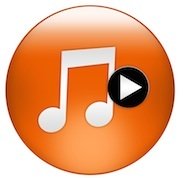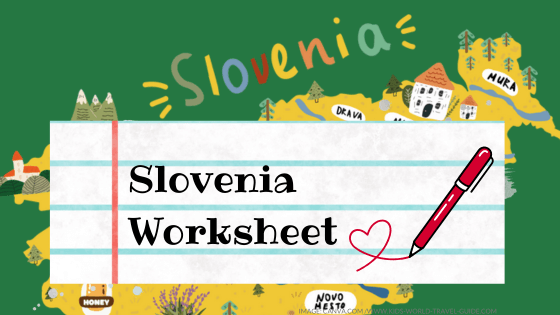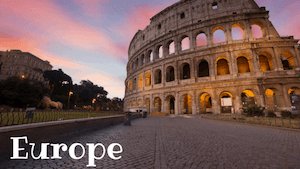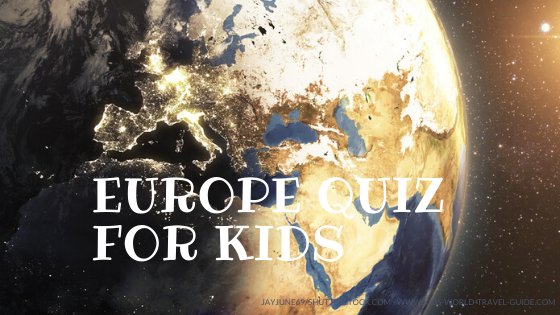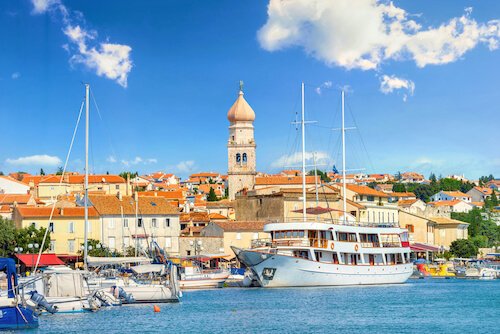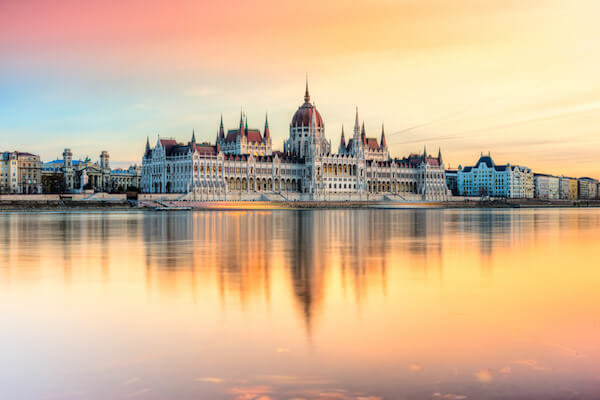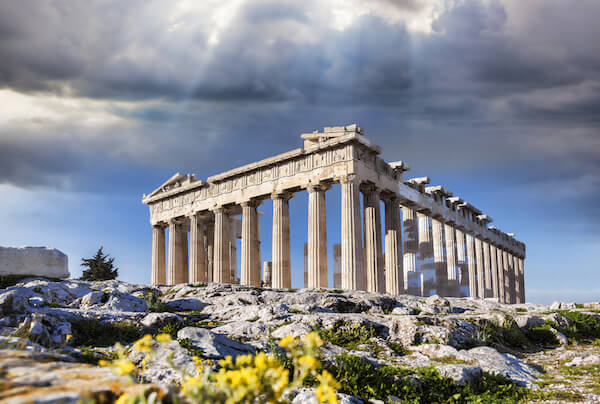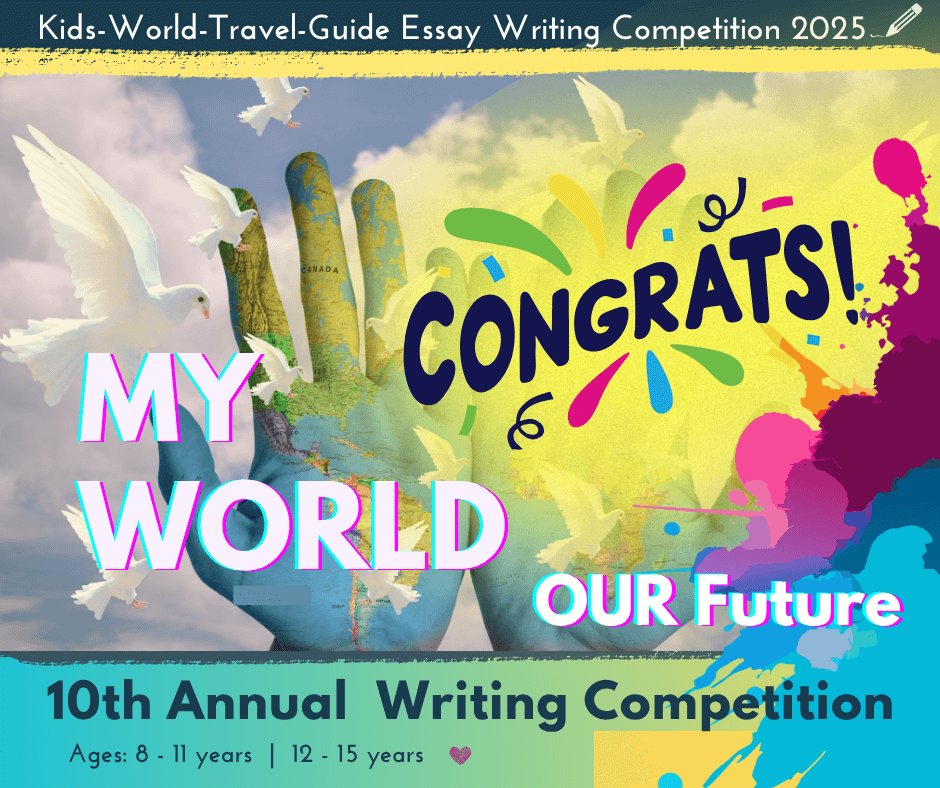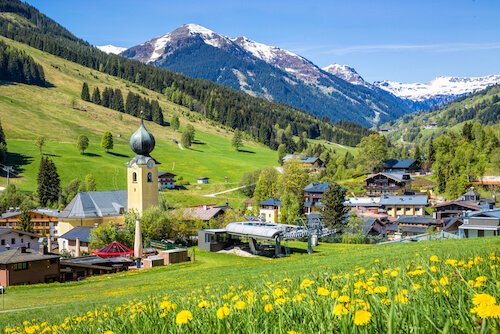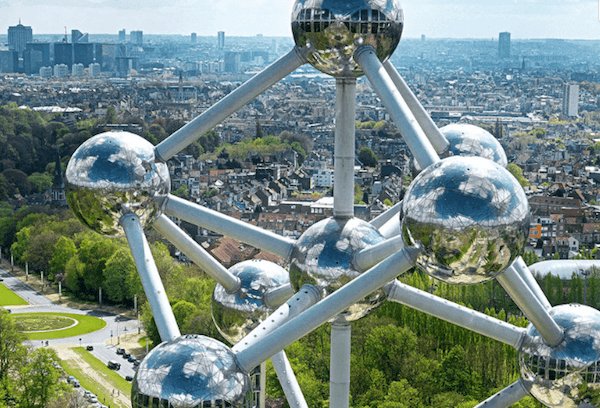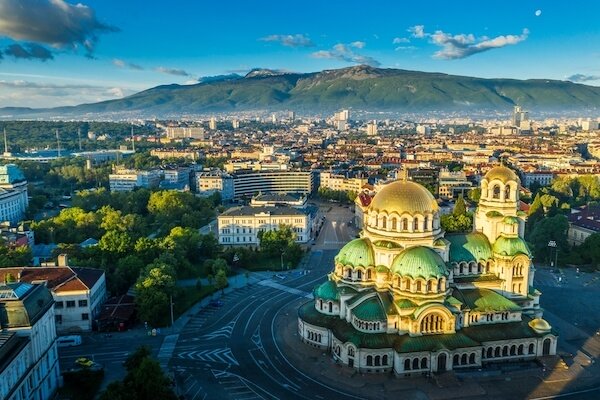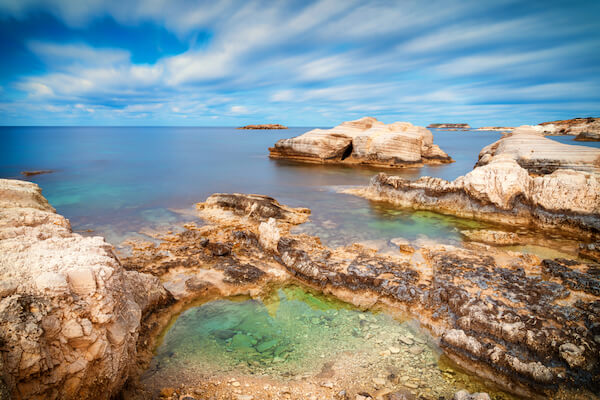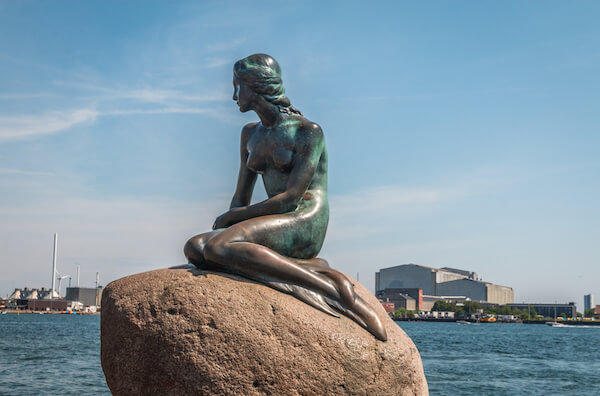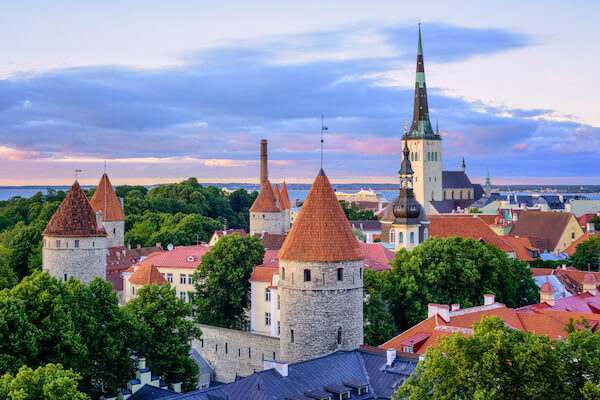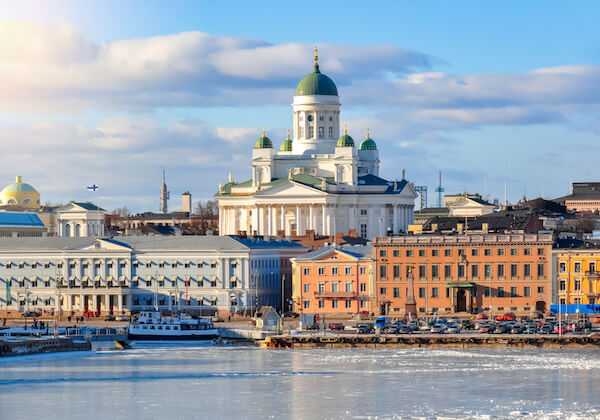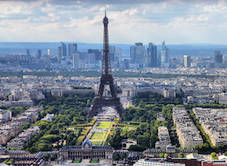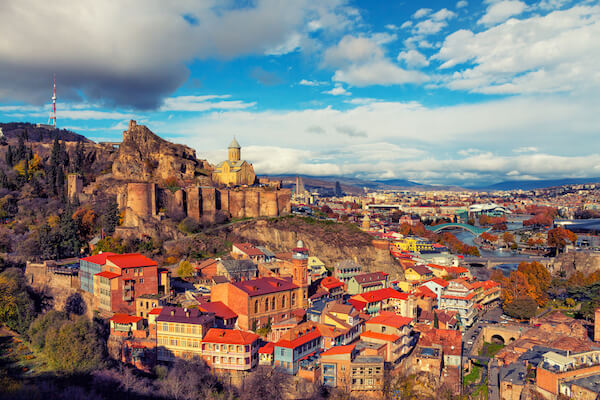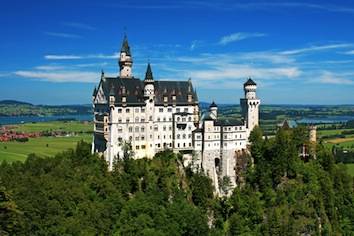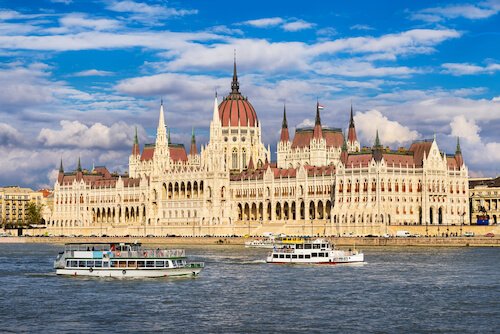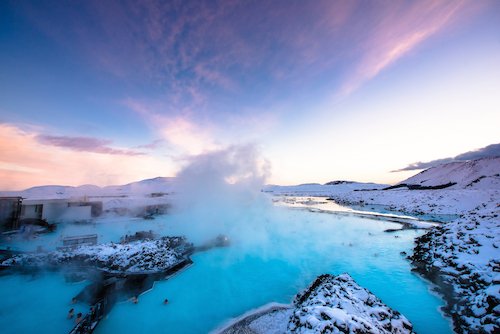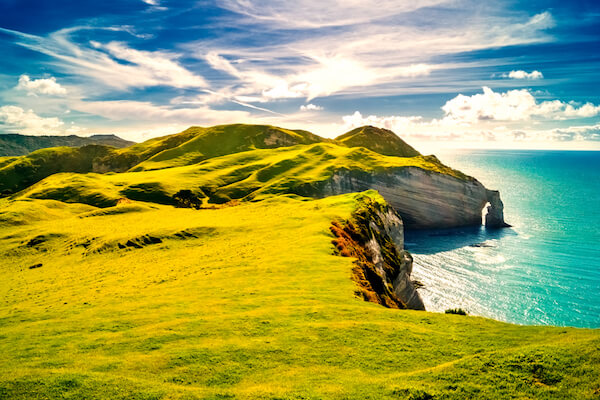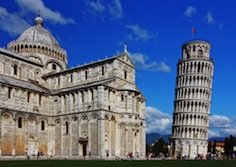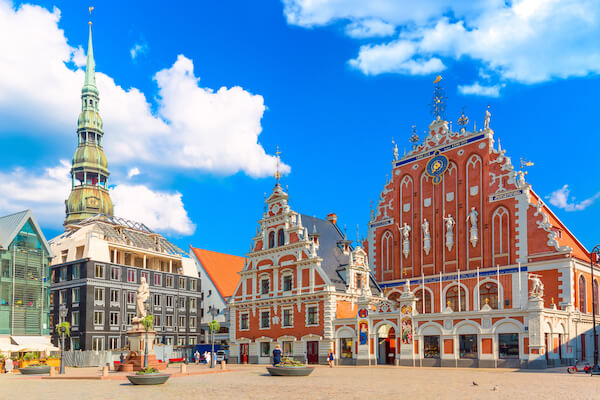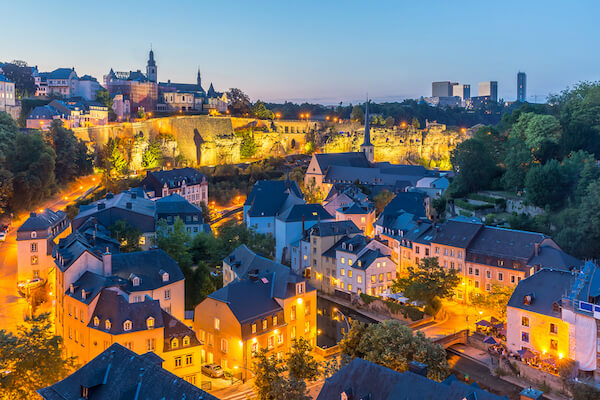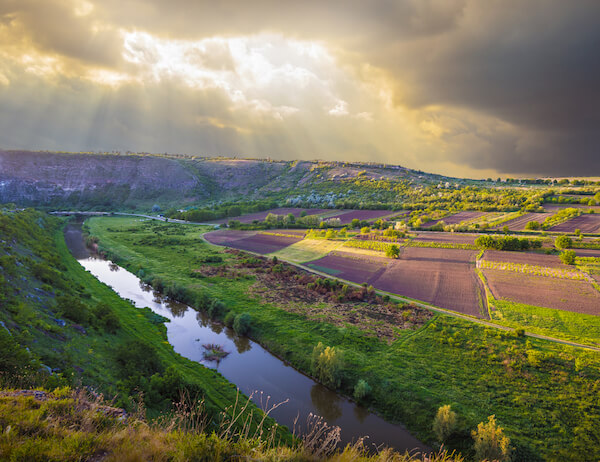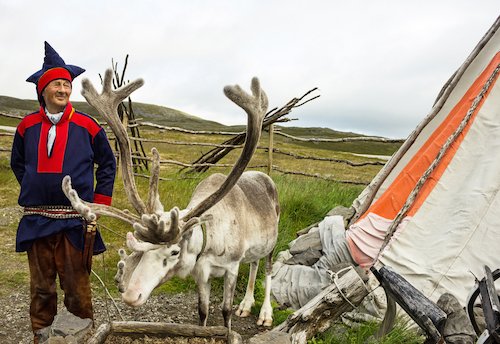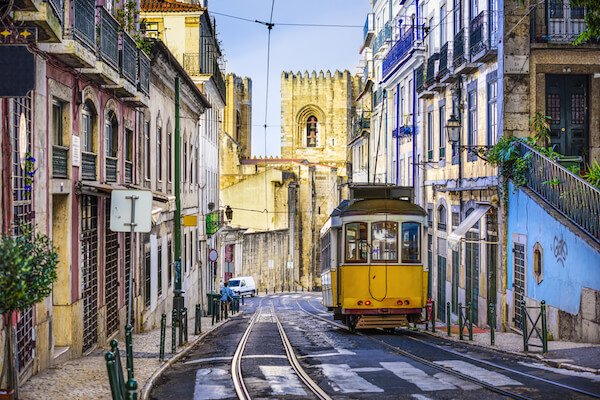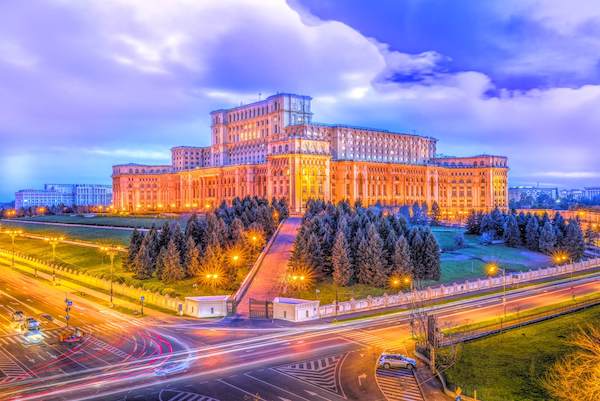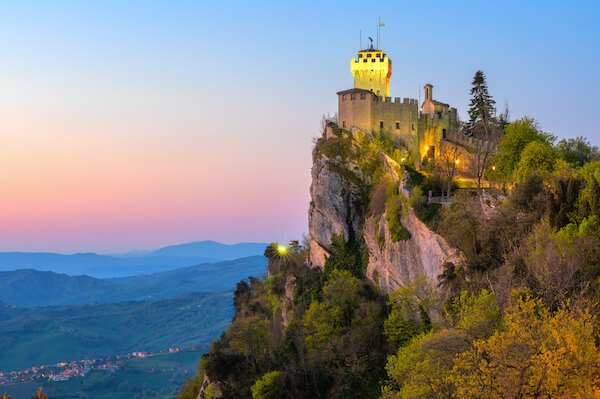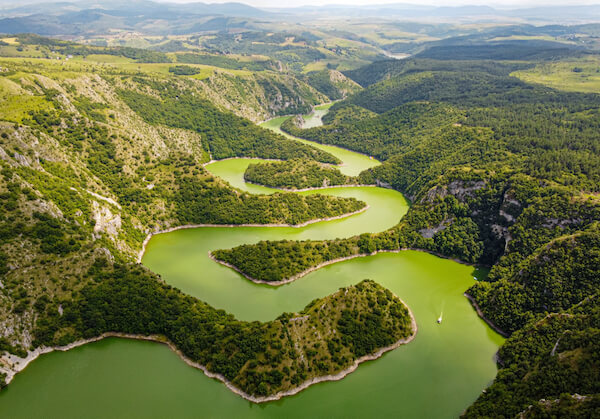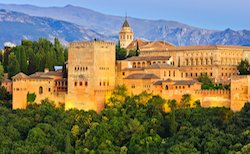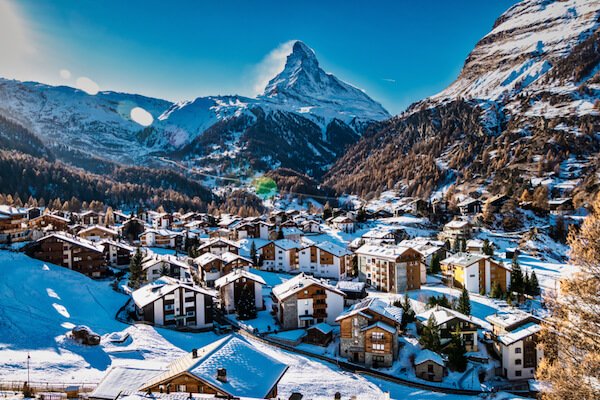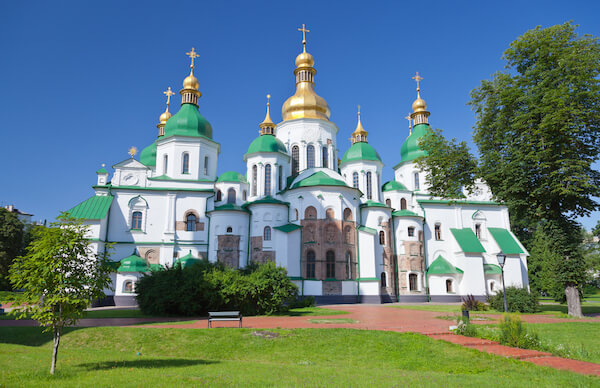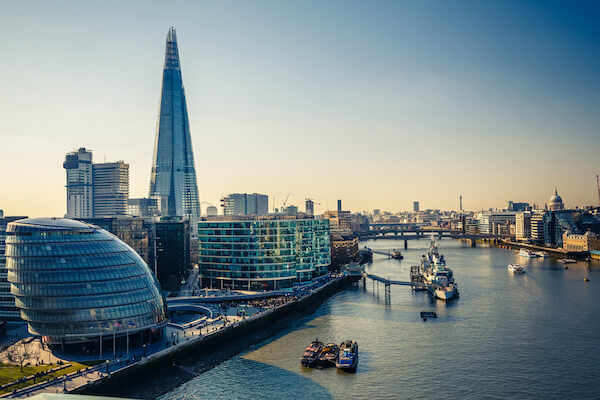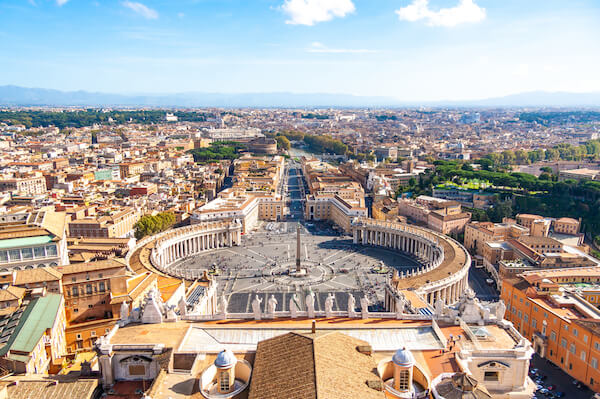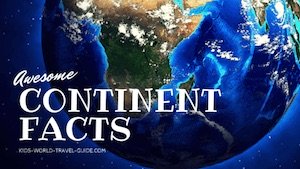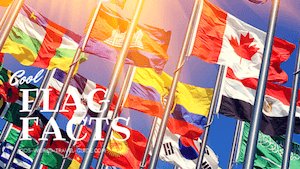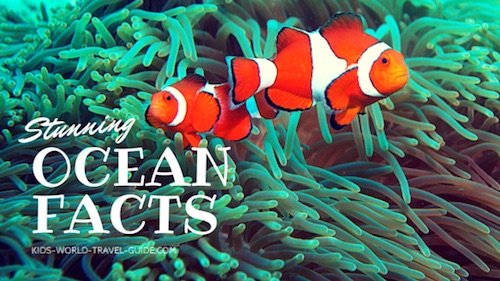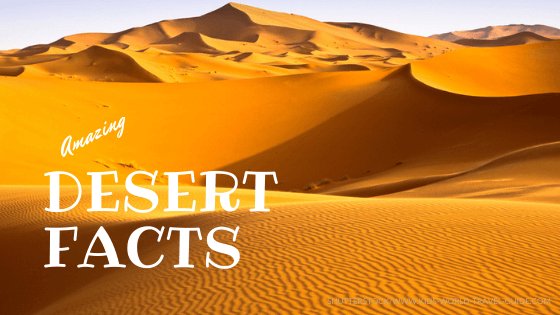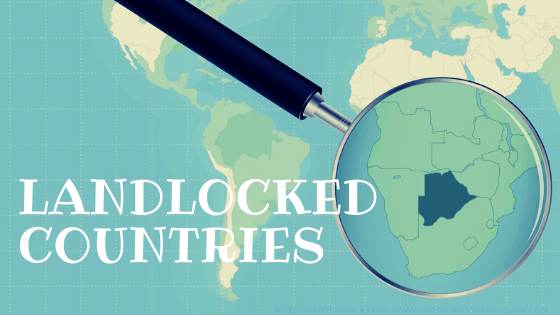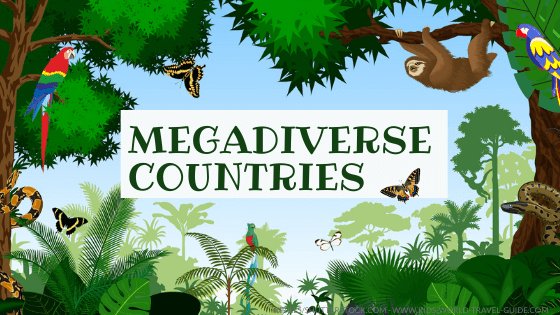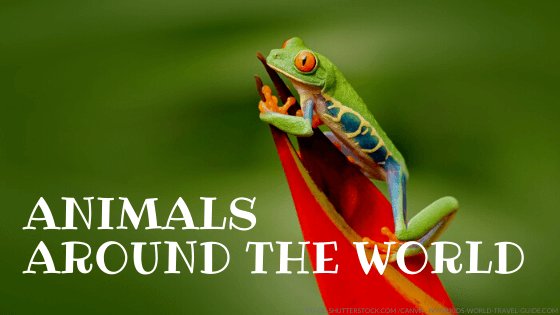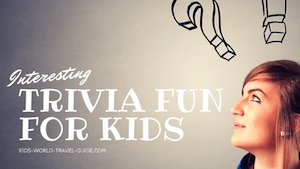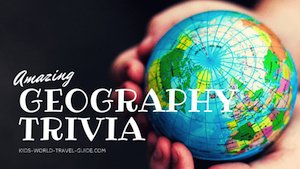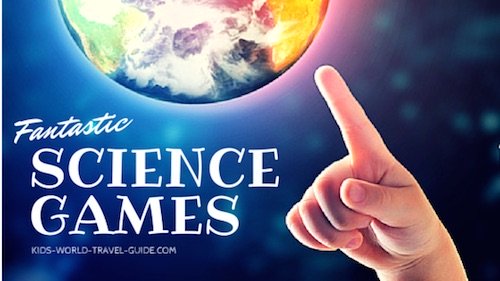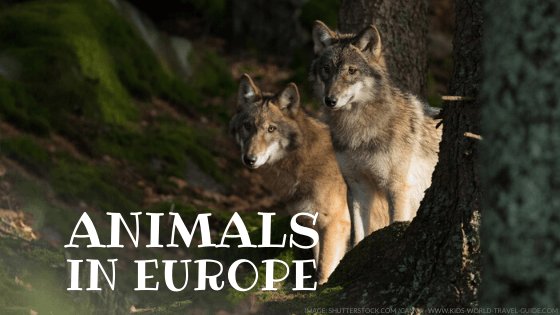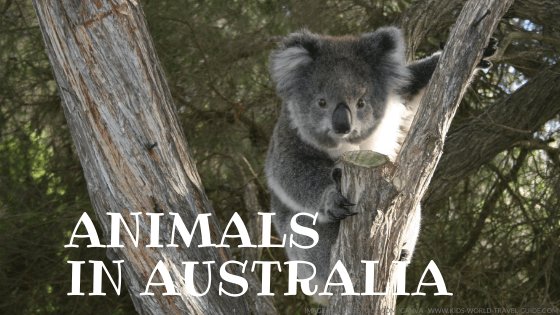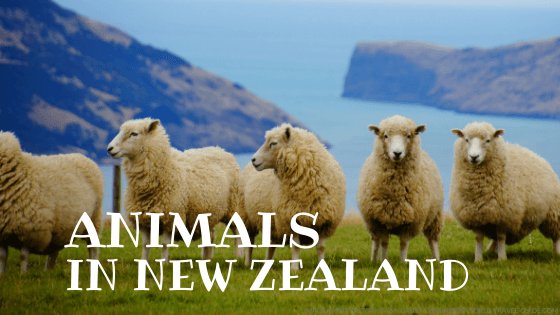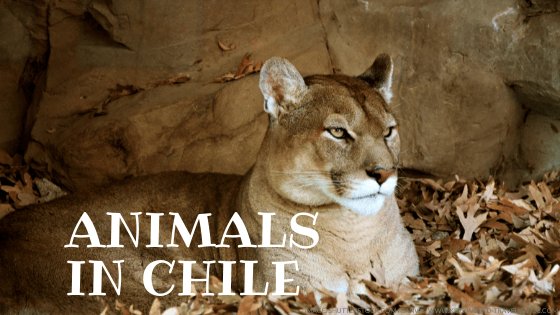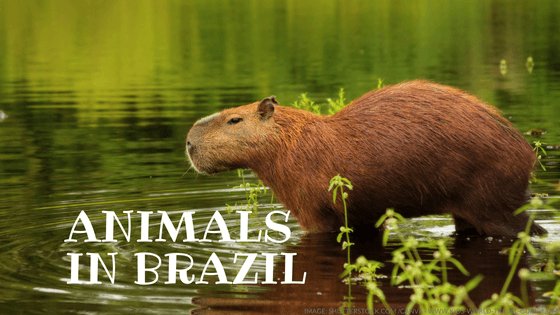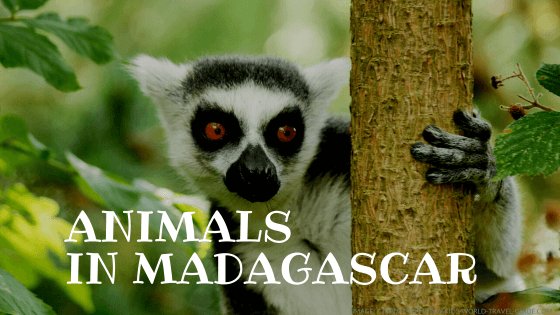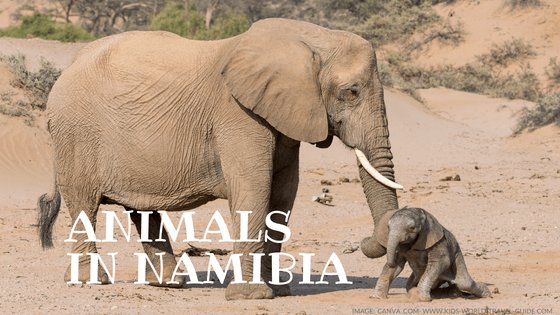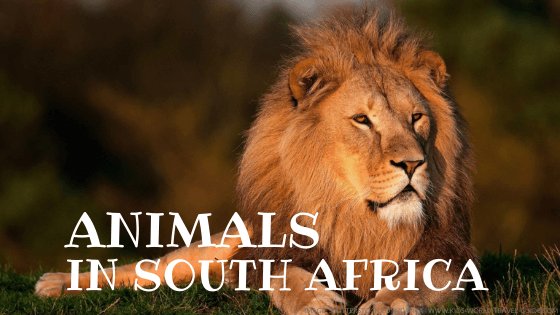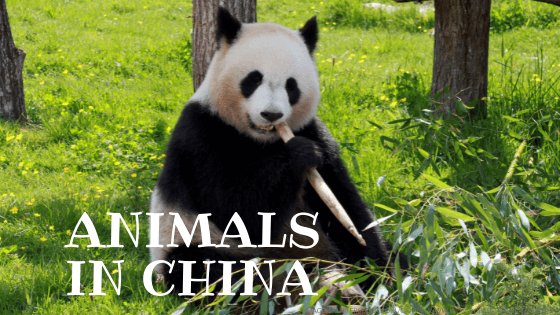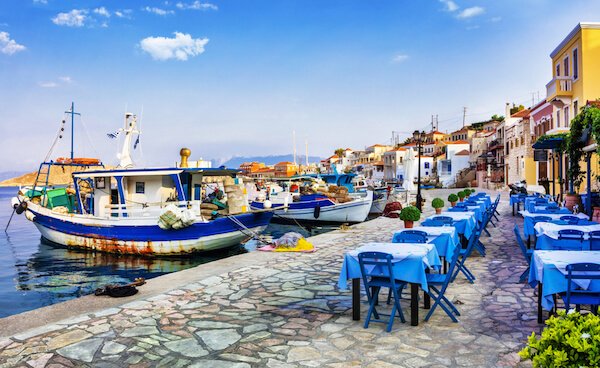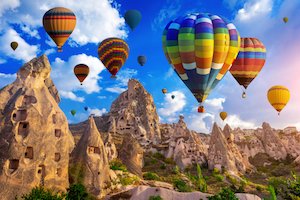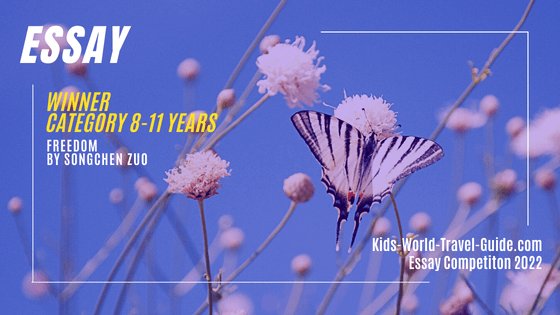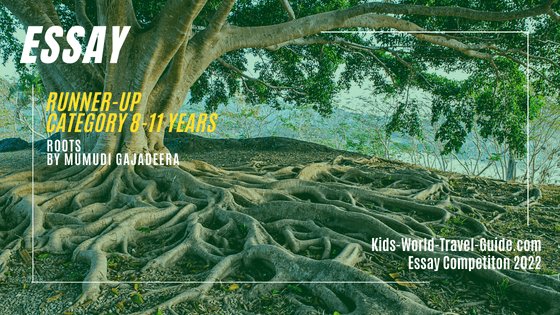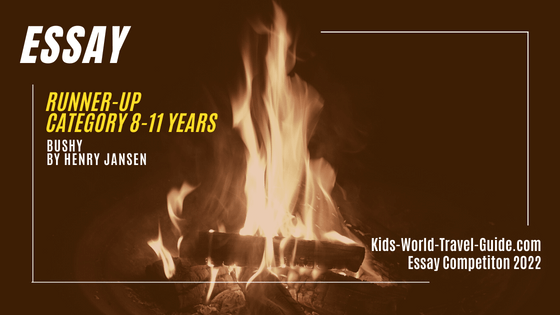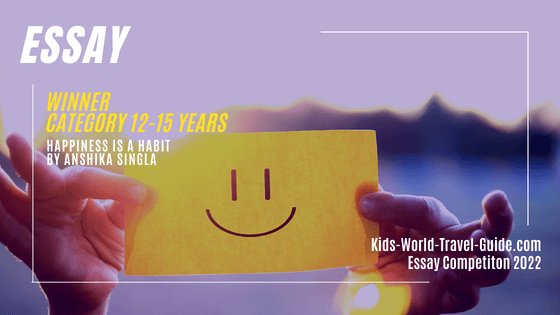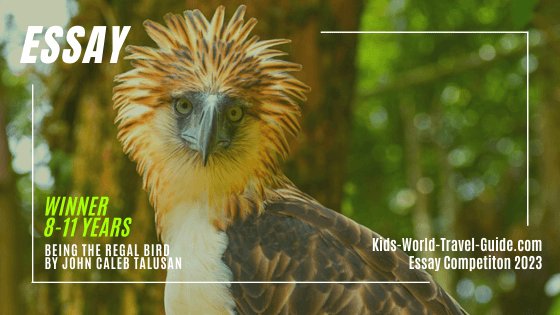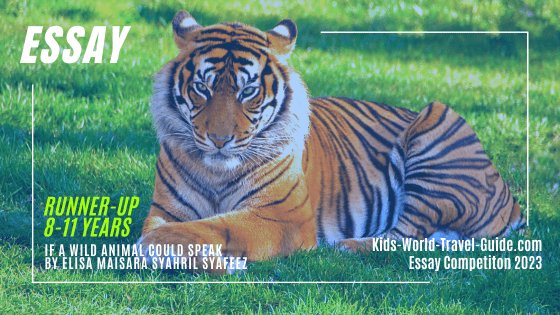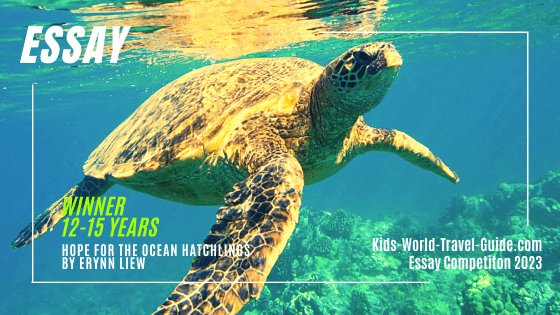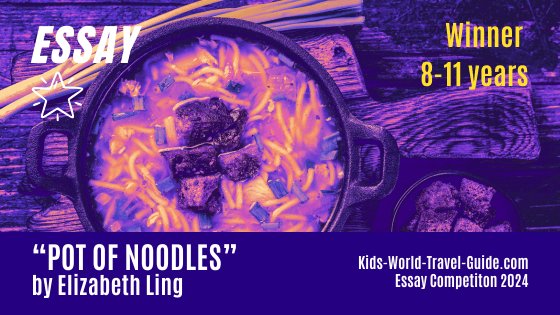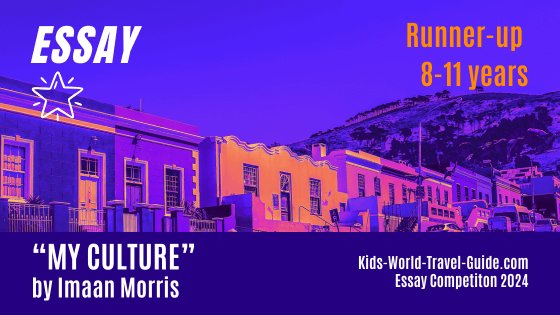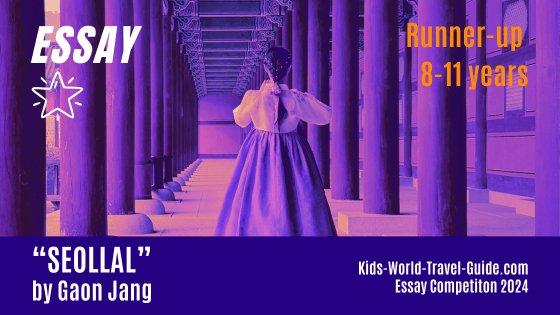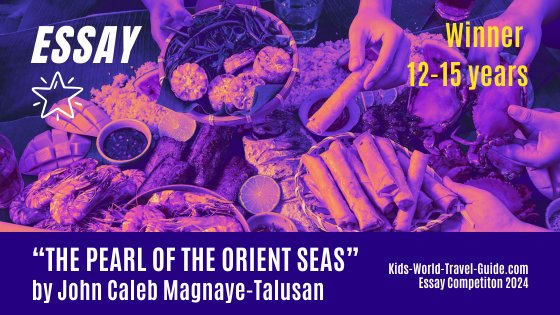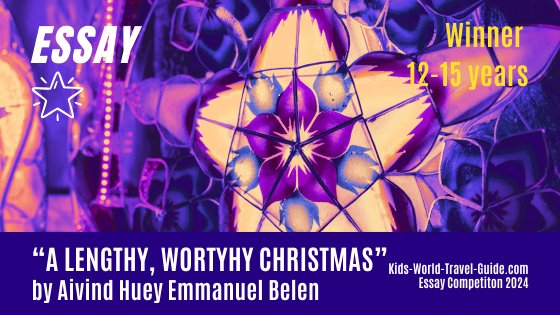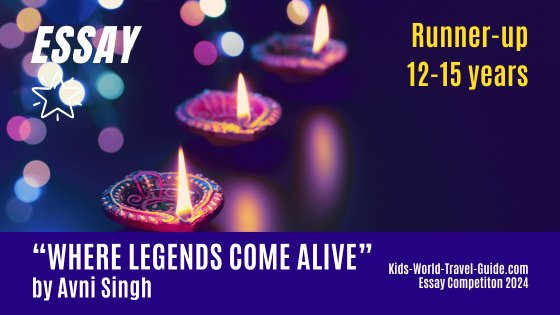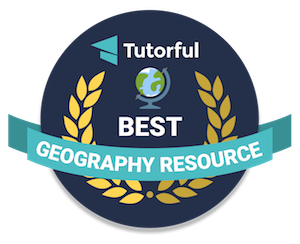Facts about Slovenia
 Facts about Slovenia: Lake Bled, Ljubljana, Lipizzan horses
Facts about Slovenia: Lake Bled, Ljubljana, Lipizzan horsesInteresting Facts for Kids
Here are some interesting Facts about Slovenia which were chosen and researched by kids especially for kids.
 Flag of Slovenia
Flag of Slovenia- Population: about 2.1 million people (2025)
- Capital: Ljubljana with 293,000 inhabitants
- Name: Republic of Slovenia (Republika Slovenija)
- Government: parliamentary democracy
- Language: Slovenian
- Religion: mainly Christians (78%)
- Currency: Euro
- History: The first people settled in the area about 250,000 years ago. Pile dwellings found in Slovenia date back about 5,000 years. The Romans explored the land and in the 6th century, Slavic tribes founded a state called Caranthania. The region found itself for a long time under various rulers, the early Bavarians, later the Habsburg monarchy and French administration as well as it suffered from Turkish raids and peasant revolts. Slovenia was part of the Austro-Hungarian Empire until the end of the first World War. Then it joined the Kingdom of Serbs, Croats and Slovenes. This kingdom was renamed Yugoslavia in 1929. After World War II, Slovenia was named Federal Slovenia and became the first republic under the Federation of Yugoslavia. In 1991, Slovenia declared independence after a 10-day war with Serbia.
 Carnation flower
Carnation flower- National Flag: white, blue and red stripes with the coat of arms on the right that includes waves, Triglav mountain and three stars
- National Symbols: Triglav (mountain), carnation (national flower) and lipizzaner horse (national animal)
- National Anthem: the Slovenian anthem is called 'Zdravljica'
- National Day: 25 June
- Prime Minister: Robert Golob since 2022
Slovenia Map and Geography
Slovenia is a small country in Europe and shares borders with four countries: Italy, Austria, Hungary and Croatia. Slovenia also borders a small stretch of Adriatic Sea coastline.
The longest border is shared with Croatia.
 Map of Slovenia
Map of SloveniaSlovenia is about half the land area as Switzerland and is a bit smaller than El Salvador or Israel. Slovenia is about the size of the state of New Jersey in the USA.
Slovenia is one of the least populous countries of the EU.
Slovenia Facts | Geography
The largest city and economic centre of Slovenia is the capital city Ljubljana with 290,000 inhabitants. Amongst the biggest cities and towns in Slovenia are Maribor with about 100,000 inhabitants as well as Celje and Kranje, each with about 37,000 inhabitants.
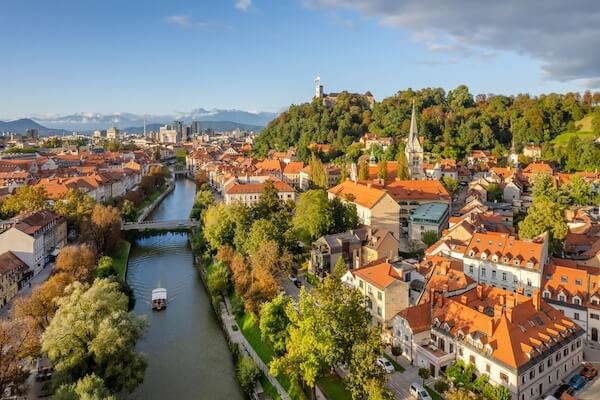 Ljubljana - capital city of Slovenia
Ljubljana - capital city of SloveniaSlovenia is located in Central Europe and has a diverse geography.
The northern parts of Slovenia are dominated by the country's highest mountains. The Julian Alps, the Kamnik–Savinja Alps and the Karawank mountain range are located along the border to Austria.
The east of the country bordering Hungary is dominated by the Pannonian plain while the Karst limestone plateau in the southwest reaches into Italy and is a region of hills, valleys and caves.
In the southeast, Slovenia borders the Mediterranean Sea. The coastline on the Gulf of Trieste is only about 46 km/ 29 miles long.
Slovenia Facts | Geo Superlatives
- The highest mountain in Slovenia is Triglav mountain, which is 2,864 m/ 9,396 ft high. This peak is also a national symbol. Triglav is located in northern Slovenia in the Julian Alps and located in the country's only national park.
 Triglav National Park
Triglav National Park- Triglav National Park is the largest national park in Slovenia housing more than 50% of the wildlife and 80% of the plant species in the country.
- Kranjska Gora in the Julian mountains is the most famous ski resort in Slovenia and the region invites hikers to the primeval forests in the valley of Mala Pišnica. This valley houses to the oldest and thickest larch trees in Europe which are up to 1,300 years old!
 Kranjska Gora
Kranjska Gora- The longest river in Slovenia is the Sava River, the largest tributary of the Danube River, with 990 km/ 650 miles. There are six major castles along the Sava, one of them is fascinating medieval Sevnica castle.
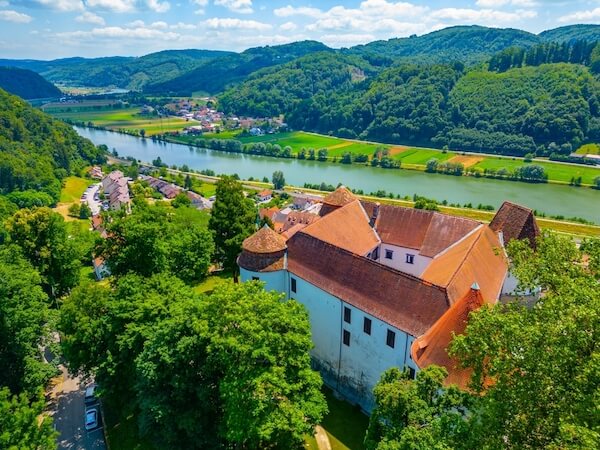 Sevnica castle above the Sava River
Sevnica castle above the Sava River- Lake Bohinj in northern Slovenia is the largest permanent lake of the country. This is natural flow-through lake where all the water in the lake changes three times a year!
 Lake Bohinj seen from the Vogel Cable Car
Lake Bohinj seen from the Vogel Cable Car- The Škocjan Caves with its giant stalactites and stalagmites house the largest underground canyon in Europe and are up to 146 m/ 480 ft high.
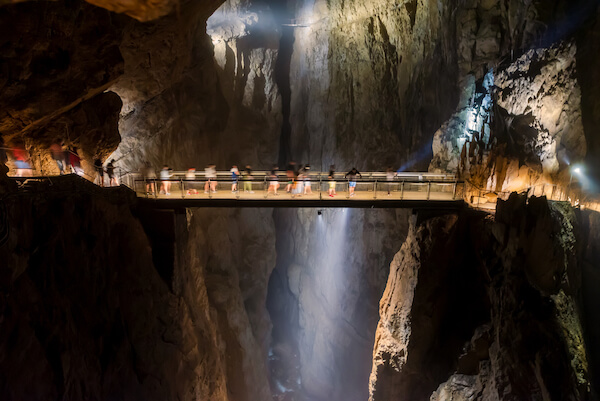 Skocjan cave
Skocjan cave- Ptuj is Slovenia's oldest town. The town was founded by Vespasian and was first mentioned in 69 AD/CE.
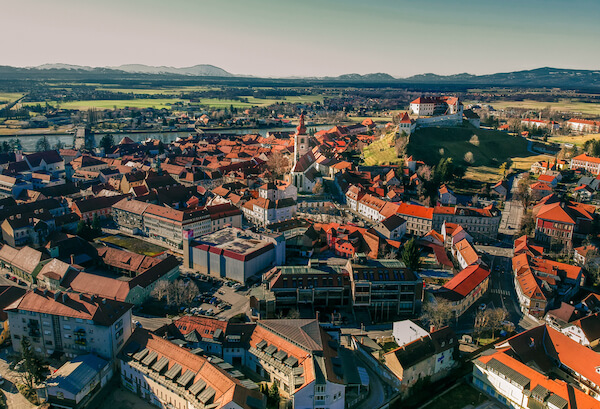 Ptuj
Ptuj- Almost 60% of the country area are covered by forests which makes Slovenia the country with the third largest forest areas in Europe - after Finland and Sweden. There are fabulous treetop or canopy walks in Rogla and Pohorje
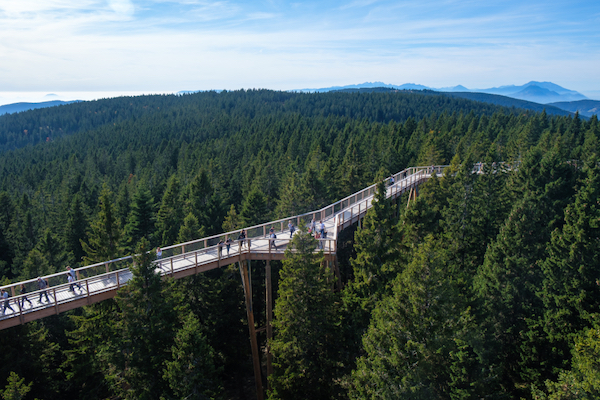 Treetop walk in Slovenia
Treetop walk in Slovenia- Bled Island is the largest island in a lake in Slovenia.
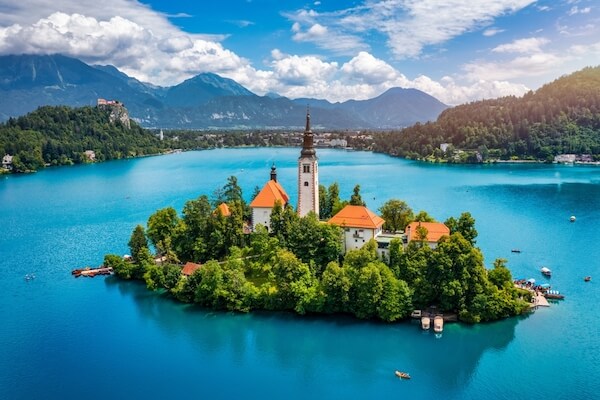 Lake Bled
Lake Bled- Slovenia's marshlands near Ljubljana are the site of a 5,150-year-old wheel. This wheel once was made by the pile dwellers of the region and is considered to be the oldest wooden wheel with an axle.
Facts about Slovenia | Landmarks
Roman ruins are found in Ljubljana (in Roman times referred to as Emona), Celje (once called Celeia) and Ptuj.
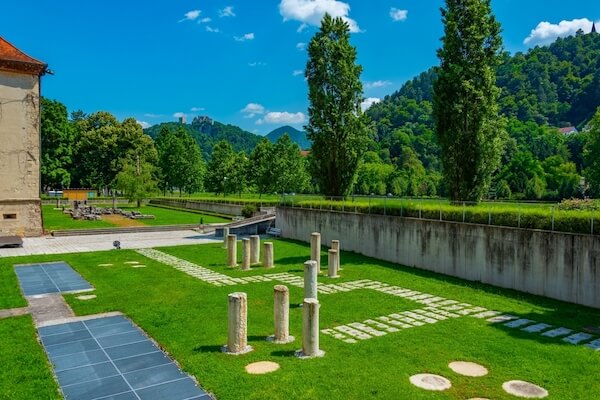 Roman ruins in Celje
Roman ruins in CeljeSlovenia has over 500 castles! Predjama castle for example is built into a cave on a cliff while medieval Celje castle is built above the ancient town and Bled castle overlooks Lake Bled.
 Predjama castle
Predjama castle Celje castle
Celje castle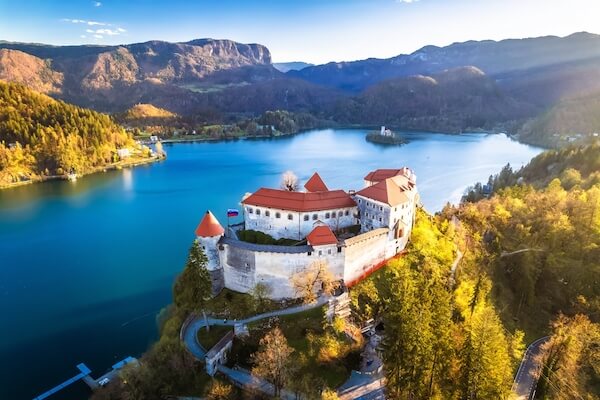 Bled castle
Bled castleThe huge Postojna cave is part of the Karst landscape and is the second largest cave in the country. Posojna Cave has 24 km/ 15 miles of tunnels and hight halls where you can even take train rides inside.
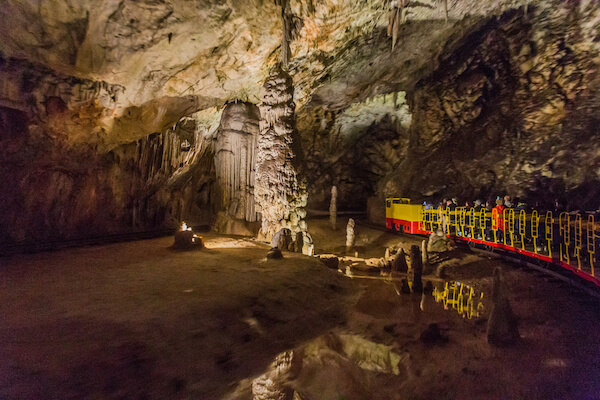 Postojna Cave
Postojna CaveBefore Christmas, Postojna cave is known for a fabulous Living Nativity spectacle with light show and over 100 actors and musicians.
- The Soča Valley and the Boka Waterfall, the highest in Slovenia with 144 m/ 472 ft are popular with nature enthusiasts. The Soča river is known for its special emerald blue colour.
 Boka waterfall
Boka waterfall- Lipica is a special place in southwestern Slovenia. Home to the Lipizzan horses the town is renowned as the cradle of the Lipizzan horse breed and a UNESCO world heritage site. The Lipizzan horse is the country's national animal.
 White Lipizzan horses in Lipica
White Lipizzan horses in LipicaFacts about Slovenia | Economy
Slovenia is a developed country with a high income and is a member of the European Union since 2004.
The country's currency is the Euro since 2007, before the Slovenian currency was called tolar.
 Salt pans near Piran
Salt pans near PiranThe main export and import partner countries of Slovenia are Switzerland, China, Germany and Italy.
The main export products are car parts, liquified petroleum, packaged medicine and plastic products.
Amongst the natural resources of Slovenia are lignite, lead and zinc.
Facts about Slovenia| Slovenian People
Most Slovenians live in and around the capital city Ljubljana. The second largest city is Maribor. These are the only cities housing more than 50,000 people. Slovenian cities are small to medium-sized. Most of the towns and villages in the country which account for almost 90 % of the settlements in Slovenia have fewer than 500 inhabitants.
Hiking, skiing, cycling, and rafting are national pastimes of the people in Slovenia.
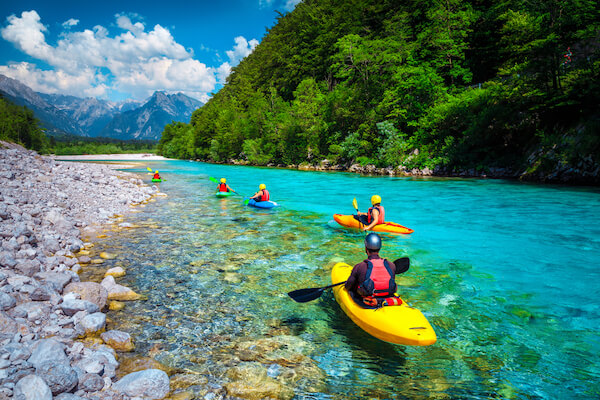 Kayaking in Slovenia on the Soca river
Kayaking in Slovenia on the Soca riverThe dominant religion in Slovenia is Christianity. Almost 70% of the Slovenes are Roman Catholics and 4% are Orthodox Christians.
However, many Slovenians celebrate traditional folklore festivals such as the spring and harvest festivals or the unique carnival celebration of Ptuj.
The Kurentovanje celebration in Ptuj is a unique event on Shrove Sunday. For Kurentovanje the Slovenes dress scary fur masks to chase away winter.
- The International Wildflower Festival takes place every year in Bohinj at the end of May and beginning of June. There is also Jurjevanje, a spring festival celebrated in Bela Krajina every year. Jurjevanje is the oldest folklore festival in Slovenia.
Famous people of Slovenia
- Jože Plečnik (1872-1957) was a famous architect. He designed Ljubljana with ancient Athens as his main inspiration. He had a major influence on the modern architecture of the cities Vienna and Prague as well.
- Luka Dončić (born 1999): professional basketball player, now one of the NBA stars in the USA playing for the Los Angeles Lakers.
- Primož Roglič (born 1989): former ski jumper turned professional cyclist after an accident. Racing for the Red Bull-Bora-Hansgrohe team in 2025 and took part in the Giro d'Italia and Tour de France among others.
- Janja Garnbret (born 1999): professional rock climber, first-ever female gold medalist in the Summer Olympics 2021 in Tokyo
- Melania Trump (born as Melania Knavs in Novo Mesto on 26 April 1970) is the USA's First Lady as wife of U.S. president Donald Trump.
Facts about Slovenia | Language
The Slovenian people speak Slovene, a South Slavic language. Slovene is the only official language and the country has a strong literary tradition, especially in poetry.
Italian and Hungarian are recognised regional languages in the border regions.
The Slovenian alphabet has 25 letters: a b c č d e f g h i j k l m n o p r s š t u v z ž. Here some practical Slovenian phrases:
- zdravo means 'hello'
- adijo or ciao means 'good bye'
- da means 'yes'
- ne means 'no'
- kako si means 'how are you' saying to friends
- hvala means 'thank you'
- prosim means 'please'
- ljubim te means 'I love you'
Facts about Slovenia | Food in Slovenia
Potica is the iconic Slovene dessert. There are more than 100 different kinds of Potica recipes, some are savoury, some a sweet. The most authentic cake is the walnut potica.
 Potica
PoticaSlovenian food in general is a mix of Austrian, Italian, Hungarian, and Balkan influences and includes:
- Kranjska klobasa: The Carniolan sausage is made with seasoned pork meat and usually served with bread and sauerkraut, horseradish and mustard.
- Potica: comes in all kinds of flavours, some are made with poppy seeds or chestnuts, others are made with herbs such as mint or chives.
- Štruklji: sweet or savory rolled dumpling-type slices of yeast or phyllo dough
- Kraška jota: thick stew made with beef and sauerkraut and often potatoes
- Knedlci: soft semolina dumplings served in clear chicken or beef broth
- Prekmurska gibanica: traditional cake with four main fillings in the layers: poppy seeds, walnuts, cottage cheese and apple
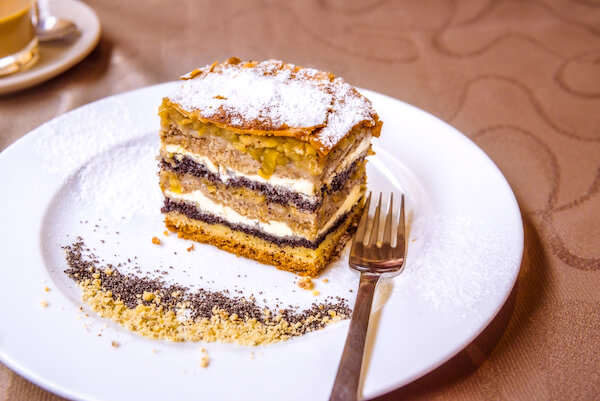 Traditional Prekmurska gibanica cake
Traditional Prekmurska gibanica cakeSlovenia Facts | Animals in Slovenia
Slovenia has a rich flora and fauna with more than 6,000 plant species and 15,000 animal species. Red squirrels, hedgehogs, rabbits and roe deer are commonly encountered. In the Julian Alps, you can often see the alpine ibexes which are known for their curved horns.
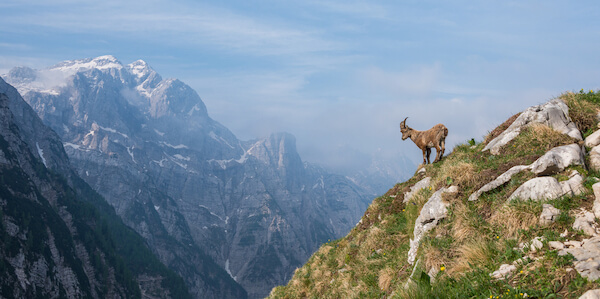 Alpine ibex high up in the Julian Alps
Alpine ibex high up in the Julian AlpsSome animal species in Slovenia are endangered such as the alpine shrew or the European ground squirrel or the white olm, called proteus or human fish, which is unique creature found in the Dinaric Karst.
There still about 1,000 brown bears in Slovenia. They mainly live in the forests of Kočevje and Notranjska.
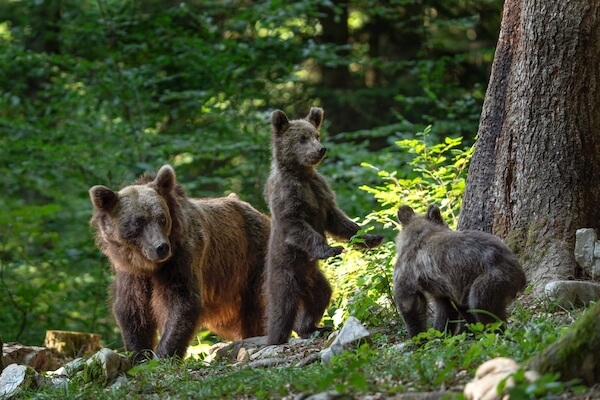 Bear with cubs in Slovenia forest
Bear with cubs in Slovenia forestSlovenia is home to the Carniolan honey bees and Slovenes are fond of the useful insect and celebrate World Bee Day on 20 May every year.
The beautiful white Lipizzan horses are bred in Slovenia. The stud farm in Lipica is considered one of the oldest stud farms in Europe and is in continuous operation for more than 440 years.
Test your Slovenia knowledge
Here is our Slovenia Quiz for Kids on a worksheet to test their understanding of the main facts about Slovenia as state on this page.
Simply click the images below and download the worksheet. Print both pages: the worksheet and teacher's answers. Have fun!
Popular Pages
More Facts about Slovenia and Resources
- Central Intelligence Agency. "Slovenia." WorldFactBook. Last updated 23 July 2025. Last accessed 18 September 2025
- Ministry of Natural Resources and Spatial Planning. "Towns and protected areas in Slovenia" gov.si. Last edited 5.1.2024. Last accessed 18 September 2025
- Slovenian Tourist Board. "Kurentovanje Carnival ." IfeelSlovenia. Last accessed 18 September 2025
- Bohinj. International Wild Flower Festival. IfeelSlovenia. Last accessed on 18 September 2025
- Park Postojnska Jama. "Baby Dragon's Secrets." Postojna Cave Park. Last accessed 18 September 2025
- Lipica. "About the Stud Farm". Lipica.org. Last accessed 18 September 2025
- UNESCO. "Slava." UNESCO. Last accessed on 18 September 2025
- Sara Kalašnik. "Potica Recipes." slovenia-kitchen.com. Last accessed on 18 September 2025
- Slovenia Tourism. "What are Slovenians like." Slovenia.si Last accessed 18 September 2025
Picture Credits on Facts about Slovenia: All Pictures, own and if not otherwise mentioned from sxc.hu and shutterstock.com
We hope you enjoyed reading our Slovenia Facts for Kids. Please bookmark this page and spread the word.
Test your knowledge
More about Countries in Europe
***
Did you like what you read?

|
Share this page with your friends! Simply use the html code below. Copy and paste onto your website, blog or Facebook page: <a href="https://www.kids-world-travel-guide.com/facts-about-slovenia.html">Kids World Travel Guide: Facts about Slovenia for Kids</a> |
